In Photos: Creepy-Crawly Experiment Reveals Spider's Brain
Jumping spiders are known to have excellent vision. In fact, their eyes are almost on par with human sight. Researchers, however, didn't know how to study the arachnids' visual system for one simple reason: Every time they tried to look at the spiders' brains, the animals would explode. Jumping spiders are filled with a highly pressurized liquid that allows their body to move like a hydraulic system. Whenever researchers pierced the spiders' bodies, the spiders would burst and die. Now, researchers have devised a new technique that allows them to peer into the brains of these amazing spiders. [Read full story on the jumping spiders]
Jumping Spider
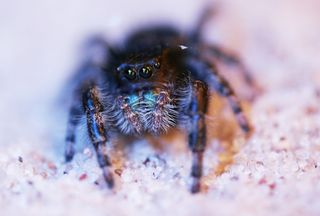
Most spiders have poor vision and build webs to catch prey. But the jumping spider has excellent vision and moves nomadically to catch its prey, such as flies and moths. (Photo credit: Gil Menda | Hoy Lab, Cornell University.)
Fly bait
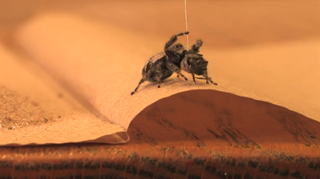
The jumping spiders responded quickly to bait, even dead flies tied to a string. Researchers were curious about how the spiders' brains processed visual information, and decided to study the spiders' visual brain cells, called neurons. (Photo credit: Charles Walcott of Cornell University.)
Tiny harness
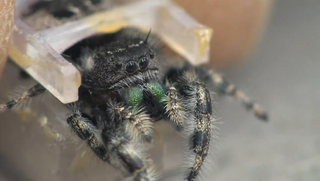
To keep the jumping spiders still during the experiment, the researchers developed a small harness created from a 3D printer. (Photo credit: Charles Walcott of Cornell University.)
Sign up for the Live Science daily newsletter now
Get the world’s most fascinating discoveries delivered straight to your inbox.
Sit tight
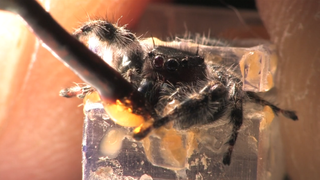
A researcher places warm wax on the spider to keep it from moving within the harness. Any movement would disrupt the results from a hair-thin electrode connected to the spider's brain. (Photo credit: Charles Walcott of Cornell University.)
Tiny hole

Gil Menda, a postdoctoral researcher of neurobiology and behavior at Cornell University, made a small, self-sealing hole in the jumping spider's head. (Photo credit: Charles Walcott of Cornell University.)
Movie time
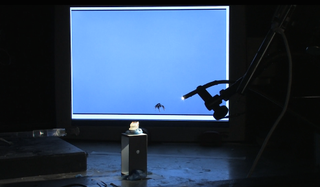
Researchers placed the spider, already in its harness, in the middle of the room and showed it images of flies and other jumping spiders. (Photo credit: Charles Walcott of Cornell University.)
Brain Waves

Brain cells associated with the jumping spider's visual system showed a jump in electrical activity when the spider saw a fly on the projector. (Photo credit: Charles Walcott of Cornell University.)
Elegant eyes

Jumping spiders have eight eyes. The pair of primary, large eyes sees details and objects, and the pair of secondary eyes processes motion. (Photo credit: Charles Walcott of Cornell University.)
Jumping time
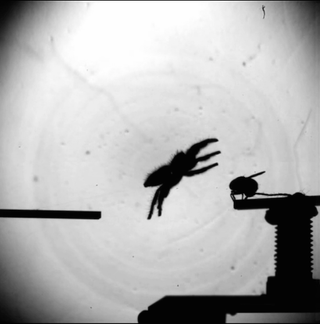
Like a cat, the jumping spider pounces on its prey, even if it's a fly tied to a string. (Photo credit: Charles Walcott of Cornell University.)
Follow Laura Geggel on Twitter @LauraGeggel and Google+. Follow Live Science @livescience, Facebook & Google+.

Laura is the archaeology and Life's Little Mysteries editor at Live Science. She also reports on general science, including paleontology. Her work has appeared in The New York Times, Scholastic, Popular Science and Spectrum, a site on autism research. She has won multiple awards from the Society of Professional Journalists and the Washington Newspaper Publishers Association for her reporting at a weekly newspaper near Seattle. Laura holds a bachelor's degree in English literature and psychology from Washington University in St. Louis and a master's degree in science writing from NYU.
Most Popular

